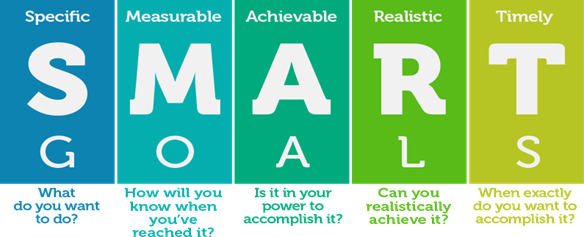Expert-recommended strategies to get men to open up about their feelings or seek help
A 2020 survey by the non-profit American academic medical center Cleveland Clinic has found that the COVID-19 pandemic is having a bigger impact on the mental health of men than many admit. 77% of respondents said that their stress levels increased during the pandemic, while 59% reported they felt isolated. Despite these, the same survey revealed that 66% of respondents rarely discussed the toll that COVID-19 has been taking on their mental health, while 48% said they put off seeing a doctor for non-COVID-19 health concerns.
While the reasons for men’s reticence to discuss their mental health may be complex, traditional masculine values such as self-reliance and stoicism are likely to play a role, with talking about mental health seen as a weakness by many. “We live in a very patriarchal society where men are expected to be strong,” says Sarge Lacuesta, Editor-At-Large of men’s lifestyle magazine Esquire Philippines. “We can’t talk to most men about their mental health concerns because they see it as a sign of weakness, and for some, mental weakness is even worse than physical weakness.”
This stigma is particularly dangerous for men because they are more likely than women to turn to dangerous or unhealthy behaviors to cope with their struggles. The suicide rate among men is 4 times higher than women’s, while they are almost two times more likely to binge drink than women. Not only that, men consistently have higher rates of alcohol-related deaths and hospitalizations. They are also more likely to have used alcohol before dying by suicide.
We need to clear the misconception (not just among men but for everyone in general) that showing emotions is a sign of weakness. “While it’s a healthy social skill to be able to behave professionally even when you’re not feeling at the top of your game, letting your guard down at socially appropriate times isn’t a sign of weakness,” writes psychotherapist Amy Morin in her bestselling book “13 things Mentally Strong People Don’t Do.” “In fact, being aware of your emotions and making a conscious decision to share those emotions with others — when it’s socially appropriate to do so — can be a sign of strength.”
It is highly possible that a male friend or loved one is experiencing feelings of depression or anxiety. By following the strategies below, you can help the men in your lives overcome the stigma, feel comfortable to reach out for help, and receive the right kind of support:
1.Take the mental health language out of the conversation, at least initially.
“Most men will take offense when you say that they might be ‘depressed,’” advises Sarge. “For them ‘depression’ is a dark word that means they have a disability and can no longer lead normal lives.”
For Sarge, a better approach would be to use the word ‘anxiety.’ “We’ve been hearing about ‘pandemic anxiety’ all over the news, so the term has become more common and accepted in our daily lives,” he explains. “So start the conversation with something like ‘You seem worried/anxious/preoccupied about something, want to talk about it?’ Most men are less sensitive to that.”
2. Show relatable role models of hope and recovery.
While Hollywood celebrities like Dwayne “The Rock” Johnson or Ryan Reynolds have been open about their mental health struggles, talking about them may not necessarily inspire men to get help. “Regular men will find these actors unrelatable. They will think ‘These are artists, they lead crazy, unbalanced lives, of course they’re depressed. But I’m not a celebrity so my situation is not as bad,’’” points out Sarge. “Instead, introduce your man to another male relative, friend, or co-worker — an everyday person who is also under a lot of pressure, a lot of anxiety, but is able to lead a normal, productive life because he has sought help. These are more relatable than celebrity stories.”
3. Encourage a light-hearted approach.
Humor offers a healthy means of coping with life stress, and men love humor. “So instead of making their mental health struggles sound so dark and technical, help them make light of it,” advises Sarge.
The next time you catch a man brooding or feeling frustrated, help him recognize the potential humor in just how ridiculously frustrating and annoying it can be. In your imagination, take the situation to an extreme that becomes even more ridiculous until he finds himself amused. For example, if he is behind the wheel and stuck in traffic, imagine that hours pass, then days…until by the time the light turns green you are already in the future and cars can already fly.
“When you are able to laugh at your condition, it means you understand it enough to make light of it and are not burdened, intimidated, or scared by it,” says Sarge.
That said, using humor comes with a caveat. “When a person makes a joke about commmitting suicide, always take it seriously,” Sarge cautions. “Even if he doesn’t push through with taking his own life, it can lead to self-destructive situations.”
4. Direct him to safe spaces where he will feel comfortable and secure
“Because of the stigma against male mental health, most men can become sensitive, defensive, or modulate themselves in front of other people,” says Sarge. “Most men will not go to a therapist because they think that it’s a waste of money, and that it’s a very vain or bourgeois habit.”
Men will be more likely to seek support for their struggles if it is made available online, if they are guaranteed anonymity, and if help is made available at more convenient times of day. MindNation’s chat helpline (link at the end of the article) is one such place; it is available 24/7 on FB Messenger and is guaranteed to be 100% secure and confidential.
5. Call attention to his responsibilities — but phrase it the right way
“Don’t tell a man that he has to get help because he has to be able to work productively and feed his family,” cautions Sarge. “This promotes toxic masculinity and adds to the pressure he feels as the ‘man of the house.’ A better way to play to his responsibilities would be to show him that when he takes care of himself, he is also modelling good self-care habits to his family and ensures that his children do not experience the same emotional struggles as him.”
6. Assure him that asking for help is not a weakness. By reaching out for help, it shows that he is strong enough to admit that he does not have all the answers, and that he’s brave enough to deal with uncomfortable emotions like humility, fear, and embarrassment, head-on. And that’s a real sign of strength.
Always remember that it takes a village to care for a person’s mental health, especially a man’s. “Men are victims of toxic masculinity as well,” Sarge points out. “It places them in a vulnerable position that keeps them locked-in and unable to express themselves.” The important thing to do is to get the message across that they are not alone and it’s okay to ask for help.
If you think a male friend or loved one is struggling, MindNation’s chat helpline on FB Messenger is available 24/7 if he needs someone to talk to. The service is free, completely confidential, and the staff is trained to ease anxieties.
— Written by Jaclyn Lutanco-Chua of MindNation













